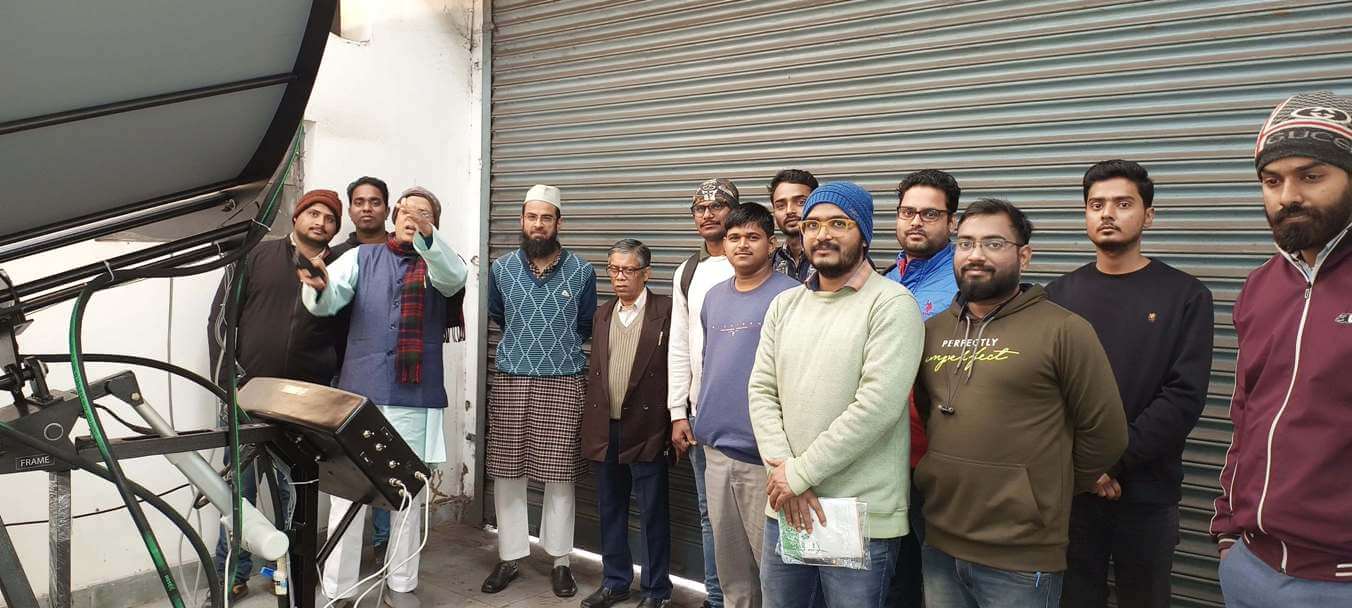NIT Jamshedpur is one of the mostsought-after engineering colleges in India. It was established with the vision to be one of the premier technical institutions for its academic excellence and innovative research to meet the future needs of society.Following their mission, the Department of Mechanical Engineering, NIT Jamshedpur, purchased Solar Concentrator Training System from Ecosense to experiment and research on Solar Parabolic Trough Collector based thermal system.
Ecosense’s Solar Concentrator Training System:
The Solar Concentrator Training System offered by Ecosense to the School of Energy Science and Engineering at IIT Guwahati provides students with a hands-on platform to conduct a wide range of experiments and learn about solar thermal technologies. Here is how the system can benefit students:
1. Active Dual Axis Sun Tracking Mechanism: The system's sun tracking mechanism allows students to precisely track the movement of the sun over time. This feature enables accurate data collection and analysis during experiments.
2. Multiple Absorber Tubes and Fluid Types: The inclusion of two absorber tubes that can be used with different types of fluids (water and oil) allows students to compare and analyze the thermal performance of the system with varying working fluids.
3. Flow Rate Variation: The ability to vary the flow rate of the liquid within the system allows students to explore and determine the optimal flow rate for achieving maximum temperature gain. This is important for optimizing the efficiency of the solar thermal system.
4. Active Measurement Panel: The system's measurement panel provides real-time data on temperatures, pressures, and flow rates at different points within the system. This data visualization helps students understand and analyze the system's operation and performance.
5. Mobility and Transferability: The system's mobility features, such as wheels, make it easy to move the equipment from one location to another. This flexibility enhances the accessibility and usability of the training system.
6. Indoor Experimentations: The system is designed in such a way that indoor experimentation on the Solar Concentrator Training system is possible with the help of halogen lamps.
7. Series and Parallel Connections: The system is designed in such a way that series and parallel connections of systems are possible both inside as well as outside the lab.
8. Datalogging with GUI: A GUI explaining the flow and functionality of the system offering a real-time data logging option comes along with the system.
Experiments for Solar Concentrator Training System
Experiments that students can perform using the Solar Concentrator Training System include:
Performance Factors Analysis: Students can determine various performance factors such as heat loss coefficient (UL), heat removal factor (FR), and overall efficiency (η) of the parabolic trough collector. They can investigate how these factors change under different conditions, such as varying solar insulation, flow rates, insulation thickness, inlet fluid temperatures, wind speeds, and ambient temperatures.
Optimization Studies: Students can find the optimum flow rate of the fluid for minimizing heat losses or maximizing heat gain under different insulation thicknesses. This type of study helps them understand the practical considerations for optimizing system performance.
The Experiment list goes as follows:
• Determine the Performance factors such as Heat loss coefficient (UL), Heat Removal Factor (FR), Overall efficiency (η) of the of the Parabolic Trough collector with fixed parameters with (i) water and (ii) oil as working fluid.
• Determine the Performance factors such as Heat loss coefficient (UL), Heat Removal Factor (FR), Overall efficiency (η) of the Parabolic Trough collector with varying solar insulation with (i) water and (ii) oil as working fluid.
• Determine the Performance factors such as Heat loss coefficient (UL), Heat Removal Factor (FR), Overall efficiency (η) of the Parabolic Trough collector with varying flow rate of fluid with (i) water and (ii) oil as working fluid.
• Determine the Performance factors such as Heat loss coefficient (UL), Heat Removal Factor (FR), Overall efficiency (η) of the Parabolic Trough collector with changing insulation thickness with (i) water and (ii) oil as working fluid.
• Determine the Performance factors such as Heat loss coefficient (UL), Heat Removal Factor (FR), Overall efficiency (η) of the Parabolic Trough collector with different inlet fluid temperatures with (i) water and (ii) oil as working fluid.
• Determine the Performance factors such as Heat loss coefficient (UL), Heat Removal Factor (FR), Overall efficiency (η) of the Parabolic Trough collector with different wind speed with (i) water and (ii) oil as working fluid.
• Determine the Performance factors such as Heat loss coefficient (UL), Heat Removal Factor (FR), Overall efficiency (η) of the Parabolic Trough collector with different ambient temperature with (i) water and (ii) oil as working fluid.
• Find an optimum flow rate of fluid for getting minimum heat losses (or maximum heat gain) for different insulation thickness with (i) water and (ii) oil as working fluid
Overall, the Solar Concentrator Training System provides a practical and interactive platform for students to explore and learn about solar thermal technologies, heat transfer, and related fields. Through hands-on experimentation, students can gain valuable insights into the factors that affect the efficiency and performance of solar thermal systems, contributing to their understanding of sustainable energy solutions.

Ecosense installed a Solar Concentrator Training system at NIT Jamshedpur
Demonstration of Equipment Conducted
Ecosense also conducted a demonstration of equipment for training Professors and Scholars. This training program was focused on educating and training the professors, scholars, and technicians in Solar Parabolic Trough Collector Technology who will further train thousands of students and professionals to start their career or business in this very field.
